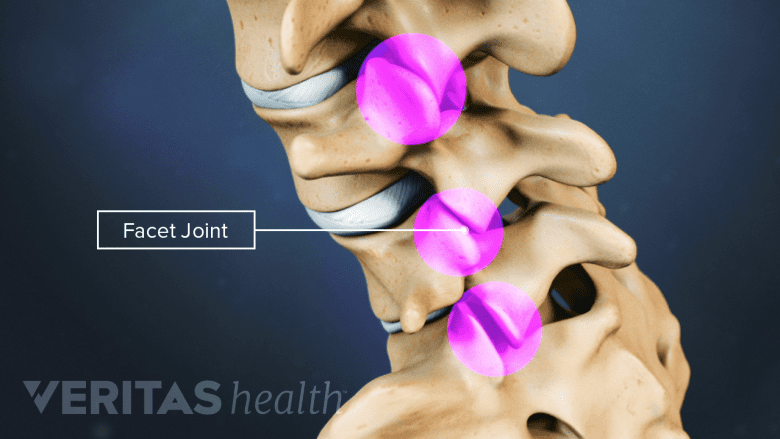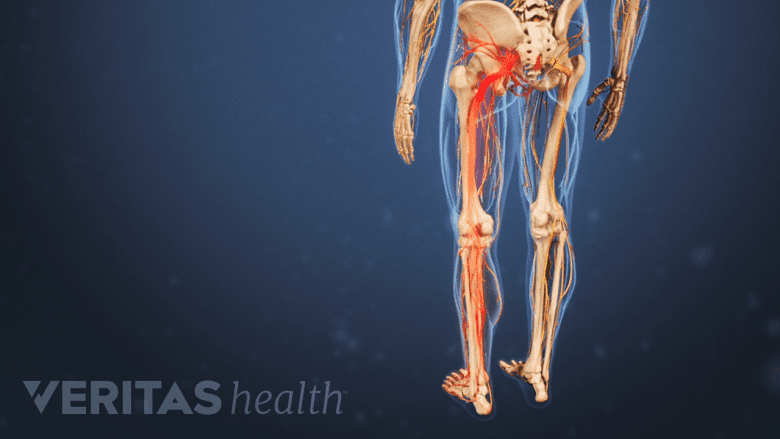The low back is a remarkably well-engineered structure of interconnecting bones, joints, nerves, ligaments, and muscles, all working together to provide support, strength, and flexibility.
However, any problem that develops in this complex anatomical structure can lead to intense and/or chronic low back pain.
Identifying the underlying cause of one’s pain is important to select a treatment based on today’s best medical practices.
This guide provides in-depth medical information on lower back pain causes and treatments.
The Lumbar Spine, What Can Go Wrong
Discs, muscles, nerves, and joints may cause lower back pain.
The low back supports the weight of the upper body and provides mobility for everyday motions such as bending and twisting.
- Muscles in the low back are responsible for flexing and rotating the hips while walking, as well as supporting the spinal column.
- Nerve roots in the low back supply sensation and power the muscles in the pelvis, legs, and feet.
- Spinal motion segments through the lumbar spine provide a combination of flexibility and motion, especially the lower two segments named L4-L5 and L5-S1.
Most acute low back pain results from injury to the muscles, ligaments, joints, nerves, or discs. The body also reacts to injury by mobilizing an inflammatory healing response. While inflammation sounds minor, it can be surprisingly painful.
There is a significant overlap of nerve supply to many of the discs, muscles, ligaments, and other spinal structures, and it can be difficult for the brain to accurately sense which is the cause of the pain.
Watch Lumbar Spine Anatomy Video
For example, a degenerated disc can feel the same as a pulled muscle – both creating inflammation and painful muscle spasm in the same area. Muscles and ligaments heal rapidly, while a degenerative disc disease typically does not. The time course of pain helps determine the cause.
Low back pain symptoms present in very different ways, for example:
- Ranges from mild and annoying to severe and debilitating pain.
- It may be confined across the low back or spread down into the buttock and leg.
- The symptoms may start suddenly or develop slowly—possibly coming and going—and gradually get worse over time.
- The low back pain may feel dull or achy, or alternatively, feel stinging and burning
Tracking and identifying specific symptoms helps to obtain an accurate diagnosis and treatment program.
In This Article:
- Lower Back Pain Symptoms, Diagnosis, and Treatment
- Causes of Lower Back Pain
- Lower Back Pain Symptoms
- Diagnosing Lower Back Pain
- Non-Surgical Treatments for Lower Back Pain
- Surgery for Lower Back Pain
- Lower Back Pain Causes and Symptoms Video
- Lower Back Pain Treatment Video
Acute, Subacute, and Chronic Back Pain
Low back pain symptoms can range from a mild ache to sharp, stabbing pain.
Treatment will usually be guided in part by how the pain started and how long it has lasted.
- Acute pain - typically comes on suddenly and lasts for a few days or weeks, and is considered a normal response of the body to injury or tissue damage. The pain gradually subsides as the body heals.
- Subacute low back pain - lasting between 6 weeks and 3 months, usually mechanical in nature, such as a muscle strain or joint pain. At this point, a medical workup may be considered, and is advisable if the pain is so bad that it limits one’s ability to participate in activities of daily living, sleeping, and working.
- Chronic back pain - lasts over 3 months, this type of pain is usually severe, does not respond to initial treatments, and requires a thorough medical workup to determine the exact source of the pain.
See Types of Back Pain: Acute Pain, Chronic Pain, and Neuropathic Pain
Spinal Segments Most Likely to Cause Low Back Pain
The two lowest motion segments carry the most weight while at the same time have the most flexibility. These two segments are highly susceptible to degeneration and injury:
The one above those, labeled the L3-L4 segment is also susceptible to degeneration and injury.
There are joints at the base of the spine that tend to cause low back pain if they become inflamed (sacroiliitis) or if they become unstable or too stiff – called sacroiliac joint dysfunction.
Categories of Lower Back Pain
There are many ways to categorize low back pain, including:
Mechanical pain
Facet joint dysfunction is one cause of mechanical back pain.
Mechanical pain (axial pain) is pain primarily from the muscles, ligaments, joints (facet joints, sacroiliac joints), or bones in and around the spine. This type of pain tends to be localized to the lower back, buttocks, and sometimes the top of the legs. It is usually influenced by loading the spine and may feel different based on motion (forward/backward/twisting), activity, standing, sitting, or resting.
Watch What Is Non-Specific, Mechanical Low Back Pain? Video
Lumbar spine issues that tend to present as mechanical or axial pain include degenerative disc disease, a herniated disc, vertebrogenic pain, sacroiliac joint pain, spinal stenosis, and vertebral fracture.
Radicular pain
Lumbar radicular pain typically extends into the buttock and/or leg.
This type of pain can occur if a spinal nerve root becomes impinged or inflamed, commonly caused by a lumbar herniated disc, spinal stenosis, or spondylolisthesis.
Radicular pain may follow a nerve root pattern or dermatome down into the buttock and/or leg. Its specific sensation is sharp, electric, burning-type pain and can be associated with numbness or weakness (sciatica). It is typically felt on only one side of the body.
When Low Back Pain Symptoms are Serious
While relatively rare, lower back pain can be a signal of a serious underlying medical condition.
Anyone who experiences any of the following symptoms should seek immediate medical attention.
- Incontinence, which includes any loss of bladder and bowel control (inability to hold in or to pass urine or stool)
- Recent unexplained weight loss – losing weight without intention, or weight loss not due to changes in diet and exercise
- Back pain accompanied by fever and chills
- Severe, unrelenting pain in the abdomen
- Progressively worsening neurological symptoms
Additionally, people who experience pain symptoms after a trauma (such as a car accident or a high-impact sports injury) are advised to see a doctor.
If low back pain interferes with daily activities, mobility, sleep, or if there are other troubling symptoms, medical attention should be sought.
Read more: When Back Pain May Be a Medical Emergency
As a first step, understanding the likely cause of one’s lower back pain aids in finding the right type of health professional for treatment.









